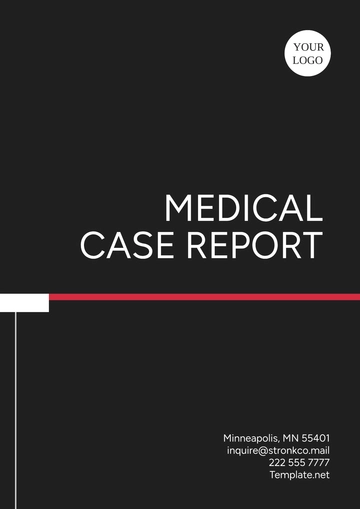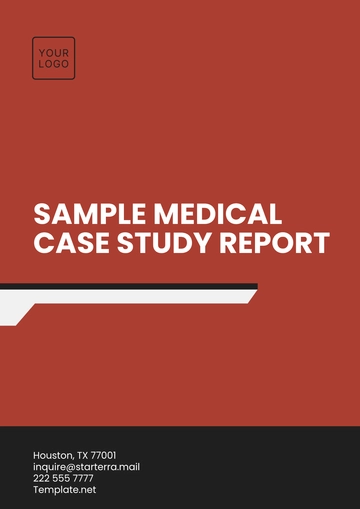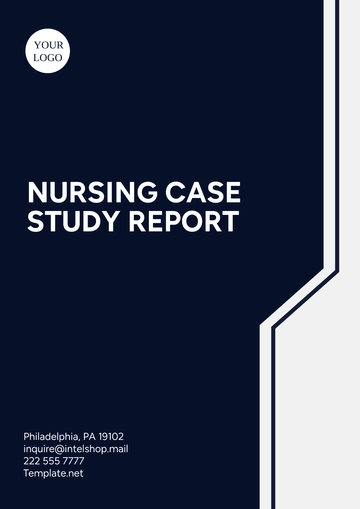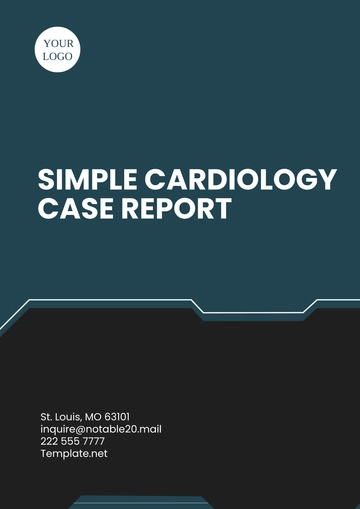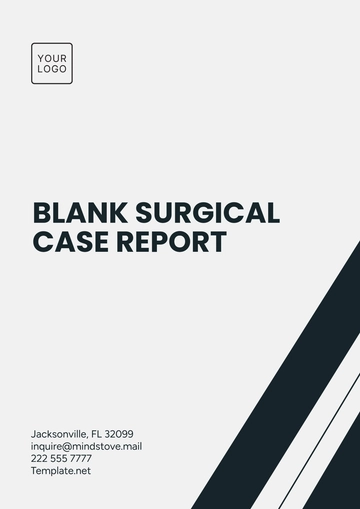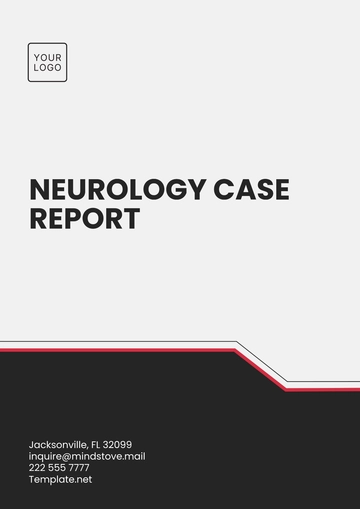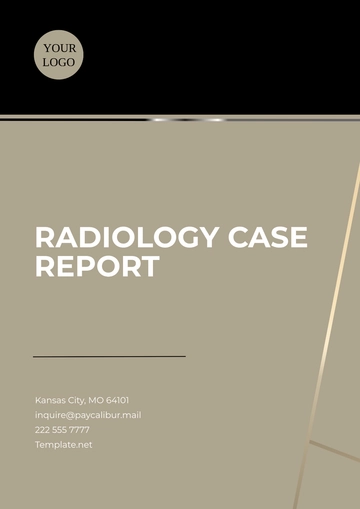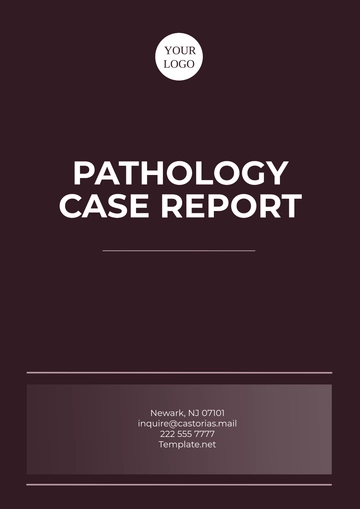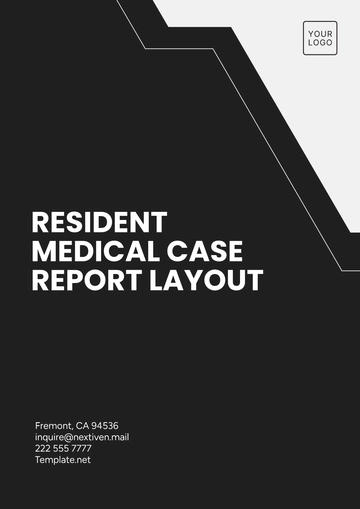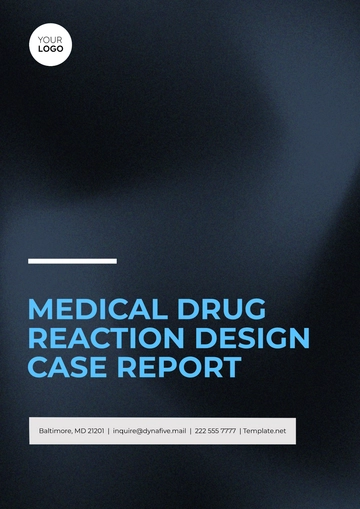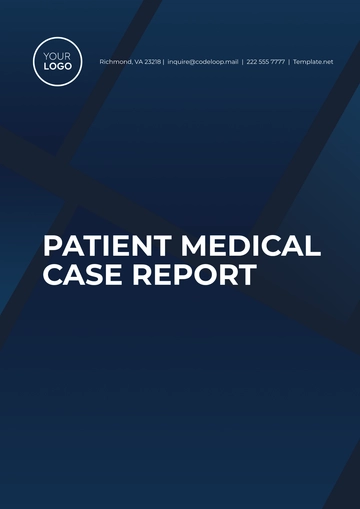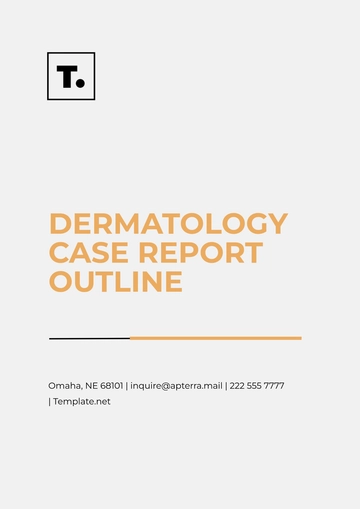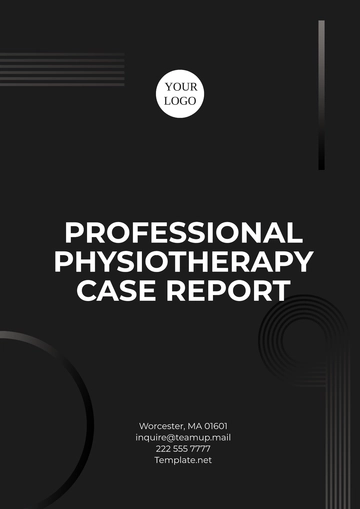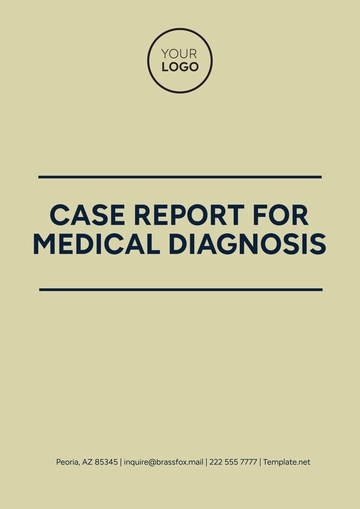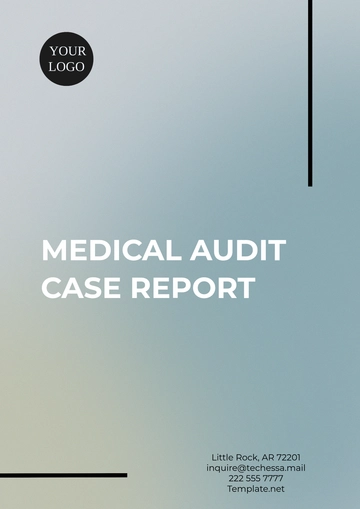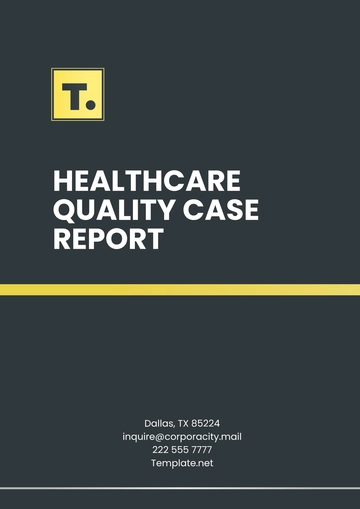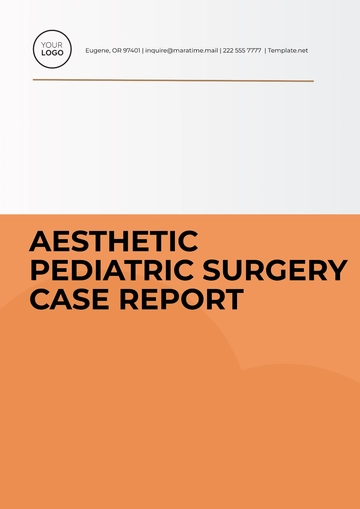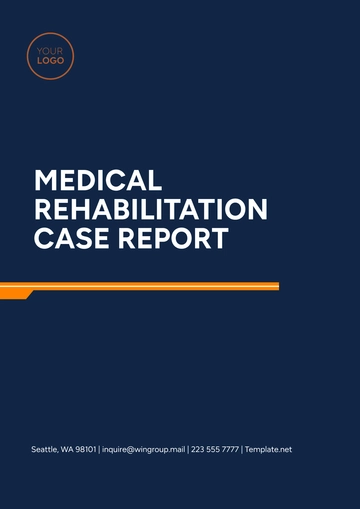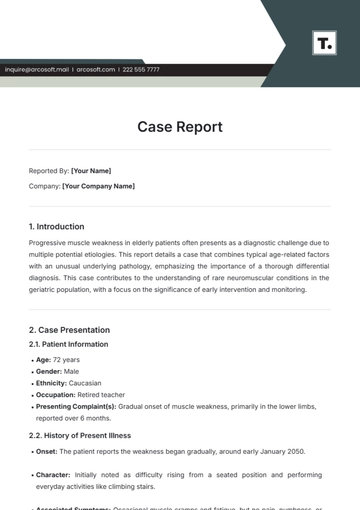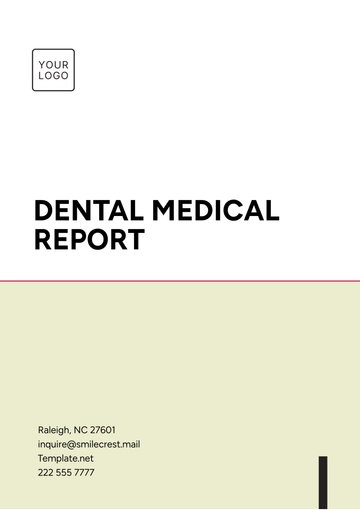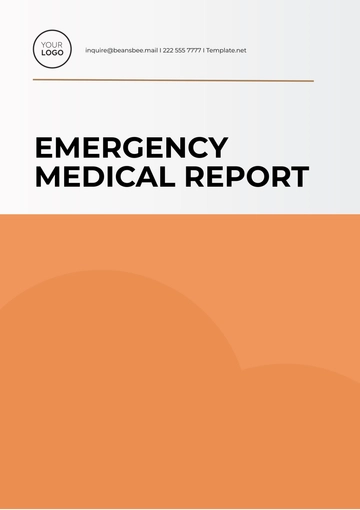Free Surgical Medical Report

Patient Information
Patient Name: | [Your Name] |
Patient ID: | 123456789 |
Date of Birth: | January 1, 2050 |
Gender: | Female |
Contact Information: | 123-456-7890 |
Diagnosis
Preoperative Diagnosis:
Acute appendicitis with suspected perforation
Postoperative Diagnosis:
Acute appendicitis without perforation
Procedure Performed:
Laparoscopic appendectomy
Indications for Surgery
The patient presented to the emergency department with complaints of severe right lower quadrant pain, nausea, and vomiting. The physical examination revealed tenderness in the right lower quadrant with rebound tenderness. A CT scan of the abdomen and pelvis confirmed the diagnosis of acute appendicitis, showing an enlarged, non-perforated appendix with surrounding inflammatory changes.
Anesthesia
General anesthesia was administered without complications. Preoperative sedation included midazolam (2 mg IV) for anxiolysis.
Surgical Findings
Upon laparoscopic exploration, the appendix was found to be enlarged (approximately 10 cm in length) and hyperemic with localized peritoneal inflammation. No evidence of perforation or abscess formation was noted. The surrounding bowel and structures appeared normal.
Operative Technique
Positioning: The patient was placed in a supine position on the operating table, with arms secured at the sides and appropriate padding.
Incision: Three small incisions were made:
10 mm umbilical incision for the laparoscope.
Two 5 mm incisions in the right lower quadrant for working instruments.
Procedure Steps:
The abdomen was insufflated with carbon dioxide to create a pneumoperitoneum.
A laparoscope was inserted through the umbilical incision, and a thorough exploration of the abdominal cavity was performed to assess any additional pathology.
The inflamed appendix was identified and carefully dissected free from the surrounding mesenteric tissue using electrocautery.
The mesoappendix was clamped, cut, and ligated with absorbable sutures.
The base of the appendix was secured with a circular endoscopic stapler, ensuring hemostasis.
The appendix was removed through the lateral incision, and the operative field was irrigated with sterile saline to remove any debris.
Closure: The fascial layers of the 10 mm incision were closed with absorbable sutures, while the skin incisions were closed using absorbable sutures and Steri-Strips. A sterile dressing was applied.
Estimated Blood Loss
A volume of approximately 50 milliliters is considered minimal for the procedure.
Specimens Obtained
The resected appendix was sent for pathological examination to confirm the diagnosis and assess for any atypical findings.
Complications
The procedure was completed without any intraoperative complications. The patient was stable throughout the surgery and responded well to anesthesia. There were no issues with bleeding or infection noted.
Postoperative Plan
The patient will be monitored in the recovery room for vital signs (BP, HR, O2 saturation) and pain management using IV analgesics (e.g., morphine 2 mg IV as needed).
Clear liquids will be initiated postoperatively, progressing to a soft diet as tolerated based on the patient's recovery.
Antibiotics (e.g., cefazolin 1 g IV) will be continued for 24 hours postoperatively.
The patient will be educated about postoperative care, including incision care, signs of infection, and activity restrictions.
A follow-up appointment is scheduled for October 7, 2055, to review pathology results and assess recovery. The patient will be advised to seek immediate medical attention if experiencing fever, increased pain, or other concerning symptoms.
- 100% Customizable, free editor
- Access 1 Million+ Templates, photo’s & graphics
- Download or share as a template
- Click and replace photos, graphics, text, backgrounds
- Resize, crop, AI write & more
- Access advanced editor
Enhance your surgical documentation with the Surgical Medical Report Template available at Template.net. This editable and customizable template ensures that your reports are precise and professional. Tailor your content effortlessly, making it perfect for any surgical practice. Edit it conveniently in our AI Editor Tool.
You may also like
- Sales Report
- Daily Report
- Project Report
- Business Report
- Weekly Report
- Incident Report
- Annual Report
- Report Layout
- Report Design
- Progress Report
- Marketing Report
- Company Report
- Monthly Report
- Audit Report
- Status Report
- School Report
- Reports Hr
- Management Report
- Project Status Report
- Handover Report
- Health And Safety Report
- Restaurant Report
- Construction Report
- Research Report
- Evaluation Report
- Investigation Report
- Employee Report
- Advertising Report
- Weekly Status Report
- Project Management Report
- Finance Report
- Service Report
- Technical Report
- Meeting Report
- Quarterly Report
- Inspection Report
- Medical Report
- Test Report
- Summary Report
- Inventory Report
- Valuation Report
- Operations Report
- Payroll Report
- Training Report
- Job Report
- Case Report
- Performance Report
- Board Report
- Internal Audit Report
- Student Report
- Monthly Management Report
- Small Business Report
- Accident Report
- Call Center Report
- Activity Report
- IT and Software Report
- Internship Report
- Visit Report
- Product Report
- Book Report
- Property Report
- Recruitment Report
- University Report
- Event Report
- SEO Report
- Conference Report
- Narrative Report
- Nursing Home Report
- Preschool Report
- Call Report
- Customer Report
- Employee Incident Report
- Accomplishment Report
- Social Media Report
- Work From Home Report
- Security Report
- Damage Report
- Quality Report
- Internal Report
- Nurse Report
- Real Estate Report
- Hotel Report
- Equipment Report
- Credit Report
- Field Report
- Non Profit Report
- Maintenance Report
- News Report
- Survey Report
- Executive Report
- Law Firm Report
- Advertising Agency Report
- Interior Design Report
- Travel Agency Report
- Stock Report
- Salon Report
- Bug Report
- Workplace Report
- Action Report
- Investor Report
- Cleaning Services Report
- Consulting Report
- Freelancer Report
- Site Visit Report
- Trip Report
- Classroom Observation Report
- Vehicle Report
- Final Report
- Software Report
